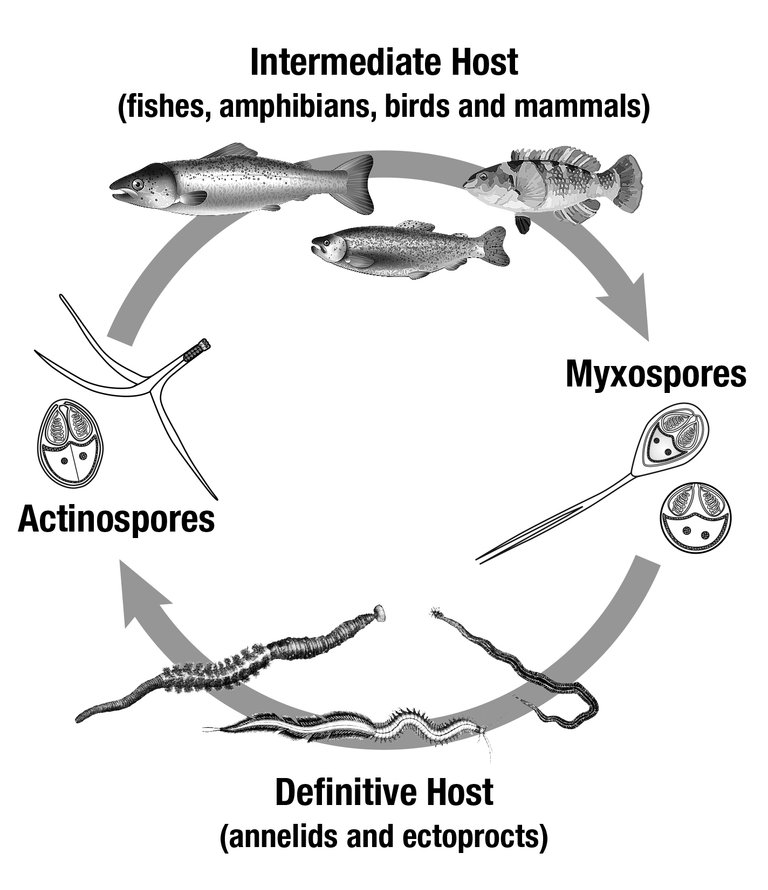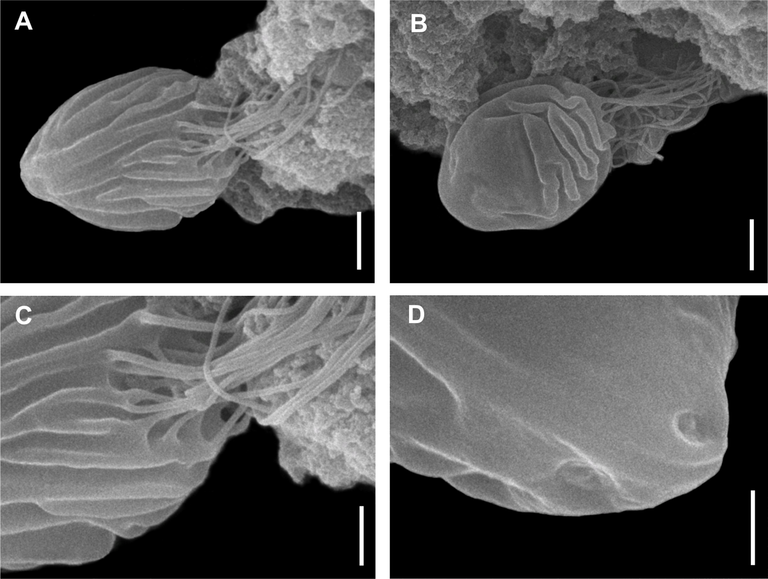Myxozoans; The Parasitic Jelly Fish Living On Land and Water
Jelly fishes are to water as their close relative, the microscopic multicellular parasites the Myxozoans (Kudoa Sepempunctata) are more attracted to land because they love it here even when they can be found in water as water.
This parasite is known for infecting the skin, the muscles, the internal organs, and other organs of Fishes. I intentionally made the fish bold so you do not start to worry yourself, but at the same time they can infect amphibians, aquatic birds, and worms. The organism do not have lots of cells in them because they are very tiny and they are able to possess multiple cells through Endoenous budding where their cells form within other cells instead of dividing. This means that one cell which is the primary cell contains another cell which is the secondary cell which also contains another cell which is the tertiary cell and so on.
Due to their simple microscopic structure, scientists in the 80s thought they were protists which were considered to be single celled organism, but they aren't single cell organisms. Also it possesses a stinging structure which is the polar capsule which is similar to the stinging structure in jellyfishes known as Nematocyst. They both use them for feeding purposes just that in different ways. While Jellyfishes use their Nematocyst to catch food, Myxozoans use their polar capsule to attach to their host.
Scientists were able to identify stinging structures like this to Cniderians and this made scientists conclude that they are sister organism as they shared the same jellyfish-like ancestors. In the life cycle of Myxozoans, they have two main life stages which are the actinospore and the myxospore and fish are intermediate hosts to help the parasite grow before they start to infect worms which are their primary hosts. The actinospores infect fishes where they stay until the myxospores are formed after which they are released to start infecting Anelids and Ectoprocts.
Except from being able to cling to aquatic host, this parasites can also survive on land inside land dwelling animals like the Sorex minutus (Pygmy shrews). Since pygmy shrews aren't anywhere close to water, one of the hypothesis that scientists could give to explain the phenomena is that the parasites infects earthworms which are then eaten by the Pygmy Shrews but then Pygmy Shrews do not eat earthworm all the time so it is still being studied and currently there are no new evidence to how the parasite found their way to land and into Pygmy Shrews.
Myxozoans just like other parasites have a reduced genome and so they would have to take whatever they need for survival from their host. A good example is a specie of Myxozoan (Henneguya salminicola) do not have a need to bread oxygen, they also have enhanced gene for metabolism, and infect their hosts in what scientists refer to as Mosaic evolution which also explains that they are not single celled organism since only multicellular larger organisms usually undergo Mosaic evolution.
If we are going to classify myxozoans, we would just say they are uniquely successful multicellular organisms that do not need to be complicated and these organisms keep evolving and growing, looking into how they can infect more organisms both on land and in water.
Reference
https://www.ncbi.nlm.nih.gov/pmc/articles/PMC10182238/
https://www.pnas.org/doi/10.1073/pnas.1511468112
https://www.ncbi.nlm.nih.gov/pmc/articles/PMC2894924/
https://www.science.org/content/article/fish-parasite-stripped-down-jellyfish
https://www.researchgate.net/profile/Dennis-Kallert/publication/274715796
https://www.marinebio.org/creatures/marine-invertebrates/cnidarians/#google_vignette
https://www.ncbi.nlm.nih.gov/pmc/articles/PMC7168919/
https://link.springer.com/article/10.1186/s12915-022-01249-8
https://academic.oup.com/gbe/article/11/8/2232/5536717?login=false
https://www.pnas.org/doi/full/10.1073/pnas.1909907117?doi=10.1073%2Fpnas.1909907117
https://nhm.openrepository.com/bitstream/handle/10141/621083/IJPara15_418R2_ed.pdf?sequence=3&isAllowed=y
https://folia.paru.cas.cz/pdfs/fol/2015/01/45.pdf
https://onlinelibrary.wiley.com/doi/full/10.1111/mec.14558


This parasite can live both in water and on land, this is very impressive but hope it doesn't infect humans?
Thanks for your contribution to the STEMsocial community. Feel free to join us on discord to get to know the rest of us!
Please consider delegating to the @stemsocial account (85% of the curation rewards are returned).
Thanks for including @stemsocial as a beneficiary, which gives you stronger support.
Hello thomisin!
It's nice to let you know that your article will take 9th place.
Your post is among 15 Best articles voted 7 days ago by the @hive-lu | King Lucoin Curator by keithtaylor
You receive 🎖 0.2 unique LUBEST tokens as a reward. You can support Lu world and your curator, then he and you will receive 10x more of the winning token. There is a buyout offer waiting for him on the stock exchange. All you need to do is reblog Daily Report 407 with your winnings.
Buy Lu on the Hive-Engine exchange | World of Lu created by szejq
STOPor to resume write a wordSTART